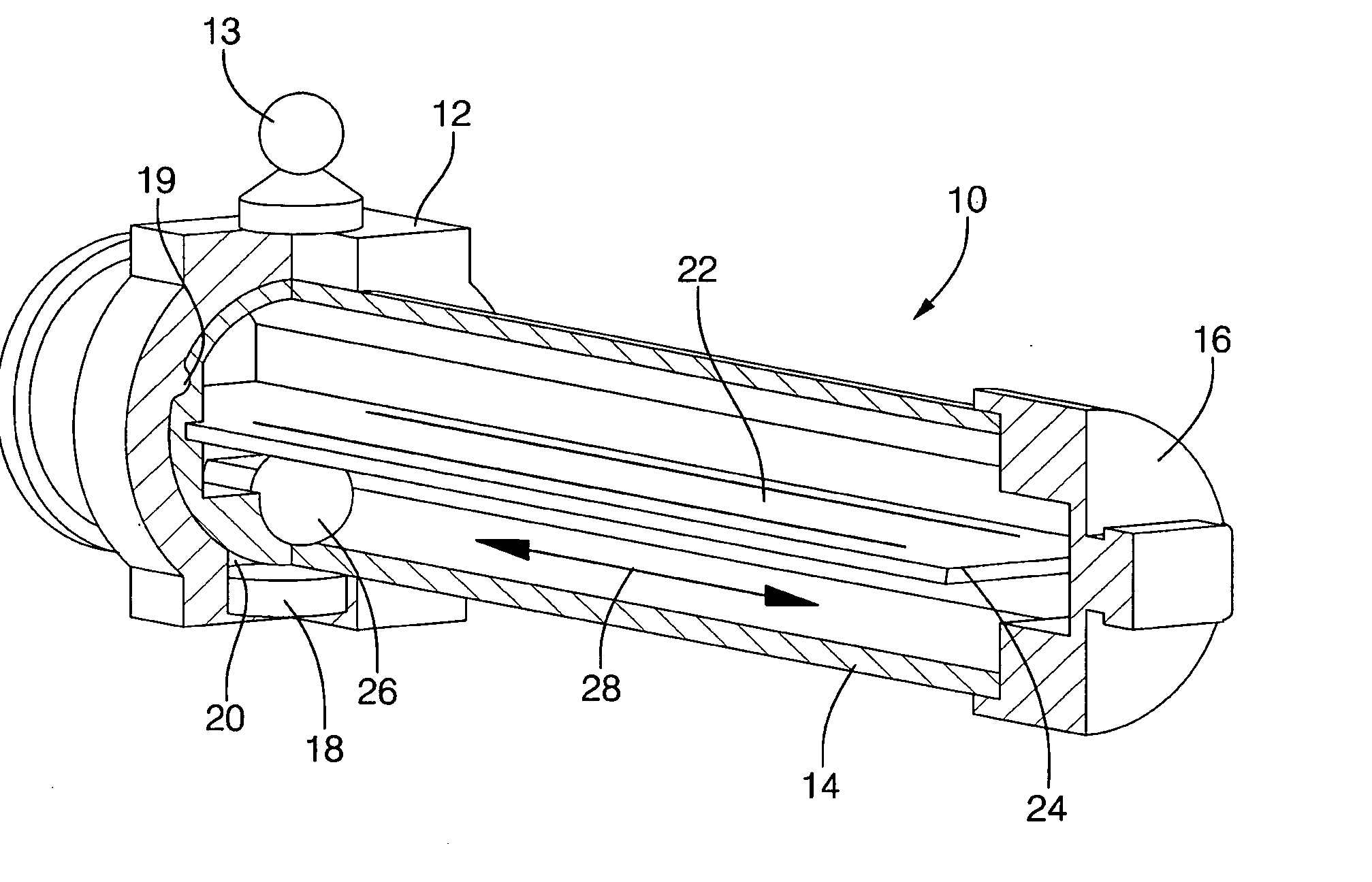Capacitor-based position sensor for vehicle
a position sensor and capacitive technology, applied in the direction of resistance/reactance/impedence, instruments, measurement devices, etc., can solve the problems of reducing affecting the ability of the sensor to function, and reducing the complexity and expense of the sensor
- Summary
- Abstract
- Description
- Claims
- Application Information
AI Technical Summary
Benefits of technology
Problems solved by technology
Method used
Image
Examples
Embodiment Construction
[0015]Referring initially to FIG. 1, a linear position sensor is shown, generally designated 10, that includes a sliding element 12 which is external to and which moves linearly relative to a sealed housing 14. The sliding element 12 can be coupled via a coupling post 13 to a vehicle component that moves linearly so that as the component moves, the sliding element 12 moves relative to the housing 14. In the particular embodiment shown, the housing 14 is a hollow, generally cylindrical structure the ends of which can be covered by base covers 16, while the sliding element 12 establishes a movable collar around the housing 14. One or more magnets 18 are coupled to the sliding element 12 by, e.g., press-fitting the magnet 18 into a magnet receptacle 20 of the sliding element 12. The sliding element 12 can be formed with anti-rotating structure such as but not limited to a guide protrusion 19 that moves in a groove or slot formed in the housing 14 to prevent rotational motion of the sli...
PUM
 Login to View More
Login to View More Abstract
Description
Claims
Application Information
 Login to View More
Login to View More - R&D
- Intellectual Property
- Life Sciences
- Materials
- Tech Scout
- Unparalleled Data Quality
- Higher Quality Content
- 60% Fewer Hallucinations
Browse by: Latest US Patents, China's latest patents, Technical Efficacy Thesaurus, Application Domain, Technology Topic, Popular Technical Reports.
© 2025 PatSnap. All rights reserved.Legal|Privacy policy|Modern Slavery Act Transparency Statement|Sitemap|About US| Contact US: help@patsnap.com



